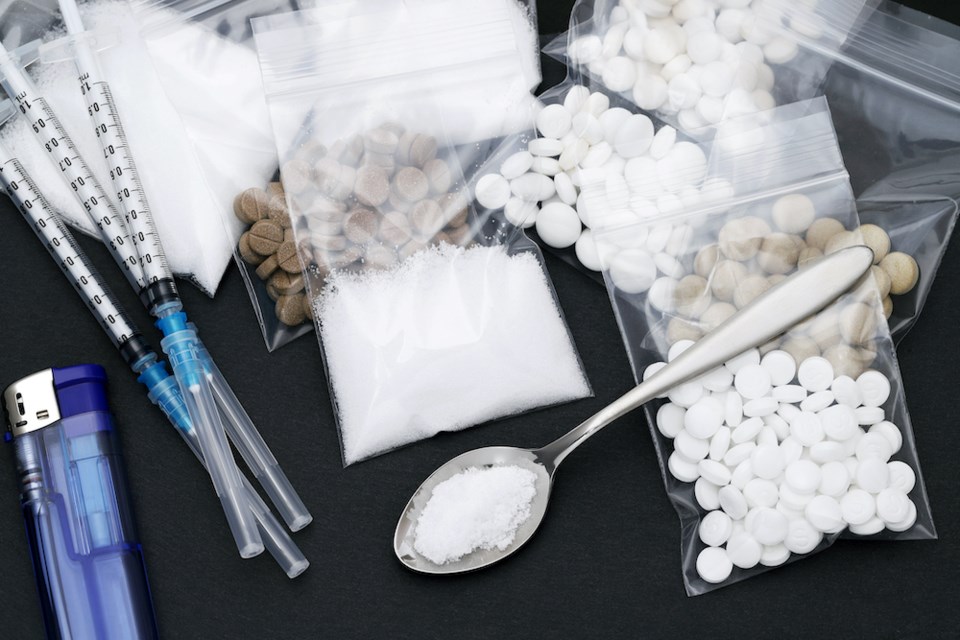Last year was the deadliest year ever for illicit drug overdoses in B.C. and, as we’ll likely soon learn when official data is released, for all of Canada. In 2021, nearly seven British Columbians died every day from using illicit drugs. In Canada, the number is almost 20 each day. More people are dying from the drug supply than ever before.
According to the Public Health Agency of Canada, 87 per cent of drug toxicity deaths involved fentanyl in 2021. In B.C., toxicology reports by the Coroners Service have found that fentanyl or its analogues have been detected in 83 per cent of all illicit drug toxicity deaths.
But we’ve known that fentanyl has taken over the drug supply since the provincial public health emergency was declared in 2016.
So why does the drug supply continue to kill people?
The overdose crisis is a dosing crisis. It’s also a poisoning crisis
At this point, most drug users know that they’re consuming is fentanyl. Many want fentanyl.
But even when someone knows that they’re consuming fentanyl, they can still die. That’s because they’re overdosing on fentanyl.
From April 2020 to December 2021, approximately 15 per cent of illicit drug deaths had extreme fentanyl concentrations. Compare that to 8 per cent from January 2019 to March 2020. It’s not simply fentanyl that’s killing people, it’s the amount of fentanyl that’s killing people.
At the same time, the illicit drug supply is also regularly contaminated with other unknown drugs. For instance, over the past year, the supply has been increasingly adulterated with benzodiazepines, usually mixed with fentanyl although also in stimulants.
They’ve been detected in some 40 per cent of illicit drug deaths in BC. Most people who are using those drugs are doing so unknowingly. Those people aren’t overdosing – they’re being poisoned by the drug supply.
In short, the drug supply is becoming more dangerous and more unpredictable.
Some are dying because they don’t know WHAT they’re taking; others are dying because they don’t know HOW MUCH they’re taking. What they have in common is that they don’t have information about what they’re consuming.
Overdoses and poisonings are a failure of consumer protection
It’s only going to get worse. These drugs are easy to manufacture, easy to traffic, highly addictive, and have high-profit margins. For the organized crime groups that control the illicit drug supply, the overdoses and poisonings are just part of doing business.
By ceding control of the illicit drug supply to organized crime, governments have also given up control of the supply of information. People need to be able to access the substance they want while making informed decisions about what they’re consuming.
You may have heard people describe the overdose crisis as a “policy crisis.” The reason is that the policies that exist are trying to control the drug supply. Instead, those policies have made the drug supply more unpredictable and more dangerous. These policies have been a failure at providing protections for the person who uses drugs.
This is why a regulated supply is so badly needed. Drug regulation isn’t a radical idea. In fact, it’s the role of governments to regulate substances to protect people. Governments do the same thing for other substances like alcohol and cannabis. They also do it for the food we eat.
By regulating these consumer goods, distribution and access are controlled and limited as needed. Regulation also means information. Like food labels. Labels tell us what’s inside, whether it’s the alcohol volume in a bottle of wine, the levels of THC in a cannabis gummy, or the amount of fat in a bag of potato chips. Each of those goods can be dangerous, but the danger is mitigated by giving the consumer information.
For instance, because of labels I know that eating 20 bags of chips is not good for me – in the
short term or long term – because of the information regulators have provided me, the consumer. But I can still choose to eat those chips because I’m hungry (they alleviate my food cravings) and they make me feel good when I eat them (feelings of euphoria).
That choice is at the heart of where the government’s idea of prescribed safer supply falls short. The substances they’ve made available to drug users aren’t what drug users need or want. Hydromorphone, which is what can currently be prescribed by a doctor to someone who uses illicit drugs, isn’t fentanyl or heroin. It doesn’t match the high (euphoria), nor does it have the same pain-killing qualities (cravings).
Prescribing hydromorphone is like offering carrots instead of chips and saying “Hey, you said you were hungry, and these are crunchy too!” Most people are going to skip the carrots and find their chips somewhere else because eating chips isn’t only about hunger and a satisfying crunch. It’s also about cravings and euphoria.
This is what groups like DULF and VANDU understand better than governments do. When they distribute drugs through their compassion club, they’re giving people the substances they want along with information about what they’re consuming. Those drugs have been tested to know what’s in them and then that’s passed on. They’ve empowered substance users to make real, informed choices.
It should be easy enough for government to take a lesson from them. After all, protections are what governments have been providing to other consumers for decades. People who use drugs have a right to those same protections.
Guy Felicella is a Peer Clinical Advisor at the BC Centre on Substance Use. Follow him on Twitter at @guyfelicella.





